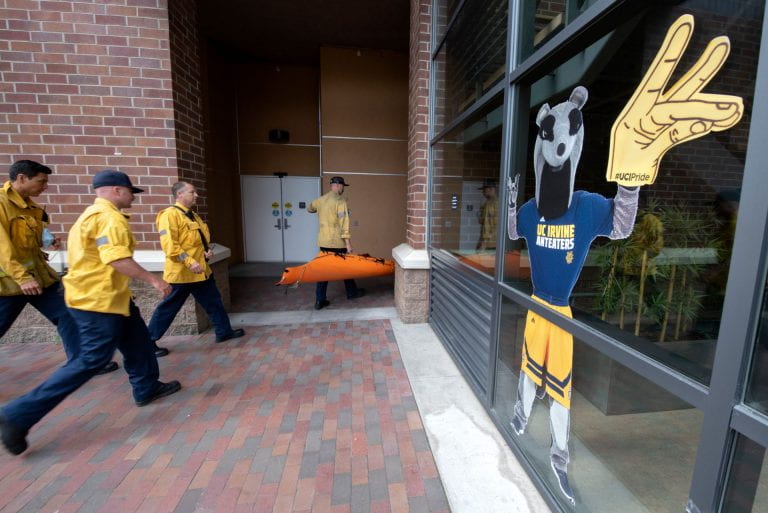Disaster Drill Aims to Aid the Elderly

NSF-funded CareDEX project tests Internet of Things technologies in mock emergency
As Hurricane Fiona struck Puerto Rico and Hurricane Ian made landfall in Florida, geriatric patients saw their homes and healthcare facilities flood and their power go out, all while facing ongoing health crises. The images in the media of these events are reminders of the disproportionate toll of natural disasters on older adults.
In a one-of-a-kind emergency drill during this month’s International Great ShakeOut, researchers at the University of California, Irvine will demonstrate new technologies to help vulnerable seniors stay safe during these increasingly common disasters.
UCI researchers in computer science, geriatric medicine and nursing will join community partners in Orange County, the City of Anaheim, the Front Porch Center for Innovation and Wellbeing for a cutting-edge, technology-enhanced earthquake drill at Walnut Village, a Front Porch retirement community, on Thursday, October 20, at 10:20 a.m.
Central to the drill will be a demonstration of CareDEX, a new smart-space technology that enables the rapid and secure assimilation and exchange of customized care information between first responders, caregivers in senior housing facilities and older adults.
The UCI-based CareDEX development team, led by Nalini Venkatasubramanian, Professor of Computer Science, includes Nikil Dutt, Distinguished Professor of Computer Science; Sharad Mehrotra, Chancellor’s Professor of Computer Science; Lisa Gibbs, Professor and Chief of Geriatric Medicine; and Julie Rousseau, researcher and Project Scientist. They have been working with City of Anaheim Emergency Manager Dr. Jannine Wilmoth, to plan the deployment and testing of CareDEX at Walnut Village Retirement Community on the Great ShakeOut day.
The collaborators’ goal is to demonstrate in an actual drill how CareDEX can readily assimilate, ingest, store and exchange information, both apriori and in real-time, with first responders and leaders at congregant older adult facilities, including from retirement communities, nursing homes, long-term care, dementia-focused care, and skilled-nursing and rehabilitation centers.
“The CareDEX information pipeline enables community partners to capture individual information about changing health conditions, injuries, medical needs and geolocation and to triage these older adults with first responders to help improve overall response,” said Venkatasubramanian. “In addition, CareDEX integrates GIS tools to provide up-to-date region-level situational awareness for dynamic decision-support, including data on the surrounding roads, transportation, healthcare facilities, hospitals, partner communities, and emerging disaster impacts (wildfires, aftershocks, flooding, and other potential sequela).”
In addition to our local partners, UCI and local authorities will be joined by personnel from the Federal Emergency Management Agency, the California Department of Forestry and Fire Protection Research Foundation.
“This earthquake drill is an excellent opportunity to collaborate with local partners to exercise technology that will enhance our community’s resiliency to disasters,” Chad Thompson, City of Anaheim Fire & Rescue deputy chief. “CareDEX will not only benefit Anaheim residents but will also provide first responders with real time information we can use to protect lives and property in our community.”
The International Great ShakeOut involves more than 8.5 million participants in California and more than 14.5 million worldwide. The event follows FEMA’s National Preparedness Month in September.
“As wildfires rage, hurricane damage overwhelms, and the ongoing threat of disasters increases with climate change, we aim to drive attention and innovation in partnership with older adults to design technologies to keep them safe, prepared and resilient,” said Gibbs.
Story originally posted on UCI News.